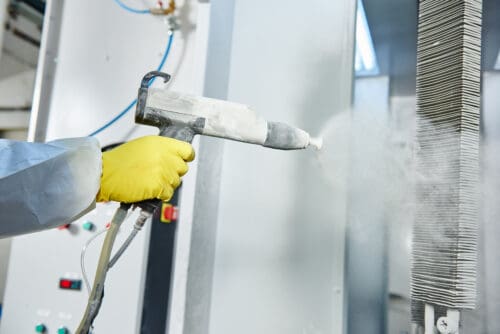Coating, much like most things related to industrial processes, is a science. Coating can be done wrong, and there are many factors that can lead to poor coating performance immediately after a coating has been applied. One of the major factors that can play a role in coating performance and efficacy is temperature. The coating needs to be done at just the right temperature, which will vary depending on the type of coating being applied. More than that, other temperature-related factors like ambient temperature and substrate temperature can play a role. What happens when you try to apply a coating when the temperature is too low or too high? Let’s see how temperature can impact coating performance and why you should get substrate professionally coated by Sun Coating Company.
How Low Temperatures Impact Coating
Let’s imagine that you’re working with Teflon FEP coatings, and you’re starting the coating process long after the coating has had a chance to cool down. What might you expect when this happens? Cool temperatures can have a massive impact on the coating process. When temperatures are too low, coatings will often have a hard time binding to the substrate, will be slow to cure in comparison to how fast they’d cure if they were put on at the right temperature, and would likely result in a poor finish. Of course, surface-level issues like discoloration and an uneven surface are the least of your concerns. The coating applied at a low temperature will be entirely ineffective at its job, potentially coming off easily or breaking as well as introducing all of the various elements you’re trying to keep out onto the substrate. If you’re attempting a coating or you’re getting it professionally done, always make sure that it’s being done at the correct temperatures.
How High Temperatures Impact Coating
Attempting coating when the coating is too hot is unlikely to lead to as severe issues as the above, correct? Not exactly. While the issues might not look as dramatic, trying to apply corrosion resistance coatings and other coatings before they should be applied can lead to many issues as well. The primary problem with coating at a high temperature is rapid drying. Rapid drying results in uneven application. While not sagging, you’re still not getting the full and secure coating that your materials need to remain protected against industrial threats. More than that, coating at a high temperature will begin to show signs of coating issues, including but not limited to cracking, blistering, and skinning. Things you might not see until much later in a coated substrate’s life become evident immediately when you begin coating far too quickly.
Receive Proper Coating With Sun Coating Company
Successful coating depends on making sure the coating used is being applied at the right temperature. Too low of a temperature gives you a coating that is not bonded correctly and has a host of other issues that make it useless immediately after it has finally hardened. Too high of a temp completely ruins the coating, even if it looks like it’s on there a bit tighter, requiring immediate replacement as well. Coating is a service that requires the support of a professional who has extensive experience offering coating services. If you’re interested in coating services and you’re ready to work with an experienced company that will provide you with the best results the first time around, start here with Sun Coating Company!
No matter the type of coating needed or the product being coated, we’ll provide you with the desired results and the superior service you demand each and every time. Get started with us today by requesting a quote for your project or reaching out to us with any questions you might have!


